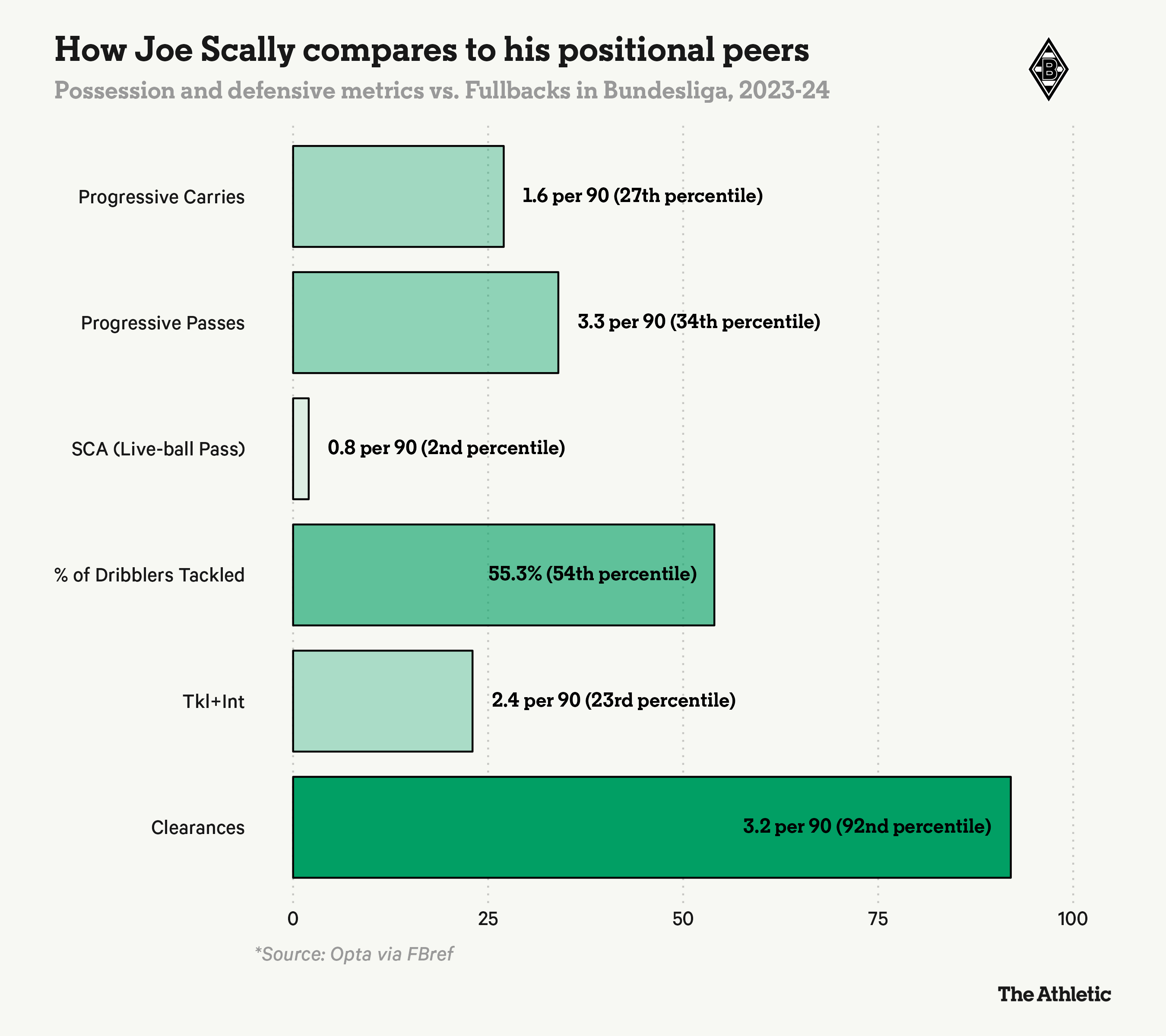Sergiño Dest put together the best season of his young career in 2023-24.
On loan at PSV Eindhoven from Barcelona, he eclipsed 2,000 league minutes — a clear breakthrough after a few nomadic seasons in Spain and on another loan to AC Milan. He was a fixture of PSV’s ongoing quest for an Eredivisie title, starting in all 25 of his league appearances while making another 12 appearances (11 starts) in the UEFA Champions League and the KNVB Beker.
Advertisement
Monday brought sobering news: The full back had suffered a knee injury in training on Saturday, with an early prognosis ruling him out for up to nine months.
That’s a big loss for PSV’s final four games, and arguably an even bigger one for the USMNT as it seeks to make a run in this summer’s Copa America. Ever since 2022 World Cup qualifying, he’s owned the right back position like few others have in any role under Gregg Berhalter.
GO DEEPER
USMNT Player Tracker: Dest disaster, Wright's toenail and Richards thriving
Of course, time only moves forward. The Copa América will kick off on June 20, with the USMNT first taking the field on June 23 against Bolivia. Only two months remain for players to firm up their cases for inclusion — and, in the wake of Dest’s injury, for someone else to step up as the team’s first-choice right back.
Whoever steps up, though, the U.S. won’t find another player like Dest. His commitment to ball progression, chance creation (‘SCA’ in the table below means ‘shot-creating actions’) and the audacity to set up his shot comprise a rare blend for a fullback. Add in Dest’s press-resistant dribbling, and the USMNT has a way to break lines even when opponents are adequately stifling primary passing lanes.
How to follow the Copa America on The Athletic…
- USMNT’s Dest set to miss Copa America
- Copa America news and features
- Copa America fixtures and schedule

The U.S. pool simply doesn’t offer a like-for-like replacement. As such, most viable alternatives will require reconfiguring how the U.S. center backs and midfielders patrol space in all phases of play.
Among those alternatives, one option immediately figures to have an inside track on the role.
Joe Scally
A member of Berhalter’s squad for the 2022 World Cup, Scally has now cemented himself as a fixture of Borussia Mönchengladbach’s defense in the German Bundesliga. Although Gladbach’s season hasn’t gone as hoped, sitting 12th in the Bundesliga and four points above the relegation playoff place, Scally has now started 20+ games for them in three consecutive campaigns.
Advertisement
On the same day that Dest injured his knee, Scally came off the bench away at Hoffenheim. He provided an assist — his third of the year, a new career high — but was unable to catalyze a full comeback as Mönchengladbach lost 4-3.
Regardless of the results, though, Scally cuts an entirely different figure as a defender than Dest.

The Bundesliga’s playstyle is generally less free-flowing than the Eredivisie, which does cut into his ability to progress the ball to some extent. So too does Scally’s versatility – he is occasionally used as a left back, right midfielder and even center back.
Still, Scally doesn’t carry that same upfield compass that guides Dest’s every decision. Instead, he’s a more traditional full back. USMNT fans of a certain vintage might compare him to Steve Cherundolo: prone to slinging effective short passes and prioritizing his defensive responsibilities over the attacking stuff.
All said, his regular involvement in a league that is among the world’s best sets him apart from the rest of the pool.
The rest of the pool
Scally and Dest were two of four right backs to make Berhalter’s 26-man roster for the World Cup in Qatar. In the ensuing year and a half, however, both Shaq Moore and DeAndre Yedlin have faded from consideration for a full-strength USMNT compared to Dest and Scally.
Moore has had a rough start to the 2024 MLS season, although the same can be said for the entire team around him. Nashville’s system utilizes his long distribution frequently, but this season he’s performed just below league average in terms of tackling and allowing opposing dribblers to bypass him. Still, he’s a known entity in Berhalter’s planning and could allow for steady progress with his passing.
Yedlin has benefited greatly since being traded to FC Cincinnati from Inter Miami in March. The move from one of MLS’s most porous defenses to one of its best has allowed him to be a bit more aggressive with peace of mind that his teammates will be up to bail out any miscue. Although he’ll turn 31 in July, he’s also displayed an uptick in his upfield carrying volume, albeit not quite at the same rapid rate as when he broke out a decade ago. His crossing isn’t quite up to positional standard, but the 81-cap veteran could be a viable alternative to Scally in big games.

GO DEEPER
MLS Takeaways: Vancouver Whitecaps early dominance; Inter Miami's squad depth support
Reggie Cannon has been a steady on-ball defender since joining Queens Park Rangers this September. In his first season in the EFL Championship, he’s let opponents dribble past him just 15.2% of the time – one of the best marks in the league. The problem? Despite this strong run of form, manager Martí Cifuentes (appointed a month after Cannon signed) dropped the former FC Dallas defender from his lineup in February, opting to start center back Jimmy Dunne in a wide role. That lack of minutes could cost Cannon a chance at the Copa América roster, as he’ll struggle to return to peak form in time for the tournament.
Advertisement
The final pair of right backs who may be in contention seemed destined to make the Olympic roster before Dest’s injury. Bryan Reynolds has been a fixture of the U-23 side throughout its preparations, benefitting from earning regular starts in the Belgian Pro League with Westerlo.
Reynolds also started regularly at last summer’s Gold Cup under interim B.J. Callaghan, which could give him a leg up over Nathan Harriel. The Philadelphia Union homegrown is untested at the senior international level but is among MLS’s best one-on-one defenders. If either is picked for the Copa América, it could open the door for Jake Davis (another strong tackler who developed in central midfield) to crack the Olympic roster.

The curveballs
If one of the above options doesn’t cut it for Gregg Berhalter, he may be able to find a solution by moving a versatile starter to the back four. Each has viable alternatives who could fill their place if they need to be relocated for the good of their country.
Tyler Adams’ return from a lengthy injury layoff was a sight for sore eyes at the Nations League. The Bournemouth midfielder has played just 211 minutes for club and country since his hamstring tear in March 2023, but he looked like his typically vital self during his two Nations League appearances last month. There’s some precedent for Adams at right back – he played there for the U.S. occasionally in the 2022 World Cup cycle. However, it’s a physically demanding role, and his recent injury history might not allow for it.
Weston McKennie’s best shift at the 2022 World Cup came as something of a right wingback. Against England, the midfielder lived in the right half-space to create a numerical overload that helped the United States in possession and frustrated the Three Lions’ build-up when the ball changed hands. However, he’s had a truly resurgent season for Juventus as a box-to-box midfielder, doing his usual all-around stuff while adding better pass selection and creativity in the heart of the park. While Luca de la Torre (or Gio Reyna, if he isn’t used on the wing) could take his place were he to move to right back, it may create more midfield imbalance than ideal.
Instead, the best bet among projected USMNT starters may be a few lockers down in the Juventus dressing room. This year, Massimiliano Allegri has utilized Tim Weah as a right wingback. The gambit worked wonders until recent weeks, where a poor run of form has Allegri shuffling his lineup on a weekly basis in hopes of keeping his job. At the club’s heights this fall and winter, however, Weah brought his usual direct speed into the role with great success, also showcasing impressive tackling acumen for a career forward.

Although he plays slightly more advanced for his club than he would for the U.S., his movement patterns are closer to Dest’s than a lot of the aforementioned alternatives. Weah has had a full season to get used to making downhill runs against more congested defenses than he finds on the wing, which would cut down on his learning curve tremendously. He would also benefit from having McKennie play in a similar spot as he does for Juventus, allowing for second-nature interplay between the pair as Weah builds a rapport with the center backs.
Advertisement
Moving Weah off of the right wing would also open that role up for Christian Pulisic. The USMNT star has been among the best wide attackers in Europe, enjoying an emphatic bounce-back campaign with AC Milan after some lean years at Chelsea. That uptick has coincided with a shift from his previous role on the left to playing on the right – the same role he played during his breakout with Borussia Dortmund.
The 25-year-old has more than held his own while sharing a forward line with Rafael Leao and Olivier Giroud, with 13 goals and 8 assists across 3,169 minutes in all competitions.

Compared to his form with Milan, Pulisic seemed to play less freely in the Nations League. At times against Jamaica and Mexico, he was caught in two minds as he navigated the final third in a role that has never quite brought out his best.
If Pulisic were to shift, the left wing has capable alternatives: Reyna for a creative spark and Haji Wright as an in-form wide forward, to name two.
If there’s a silver lining to be found around Dest’s injury, perhaps it’s the potential for a shake-up that keeps the USMNT from replicating the worryingly stale first 90 minutes against Jamaica. Not only would it put the team’s best player into his best role, but it would also make the USMNT harder to gameplan for due to a lack of previous utilization. Sometimes, those tweaks can make a major difference in a knockout format.
(Top photos: David Jensen/Getty Images; John Dorton/ISI Photos/USSF/Getty Images for USSF)

